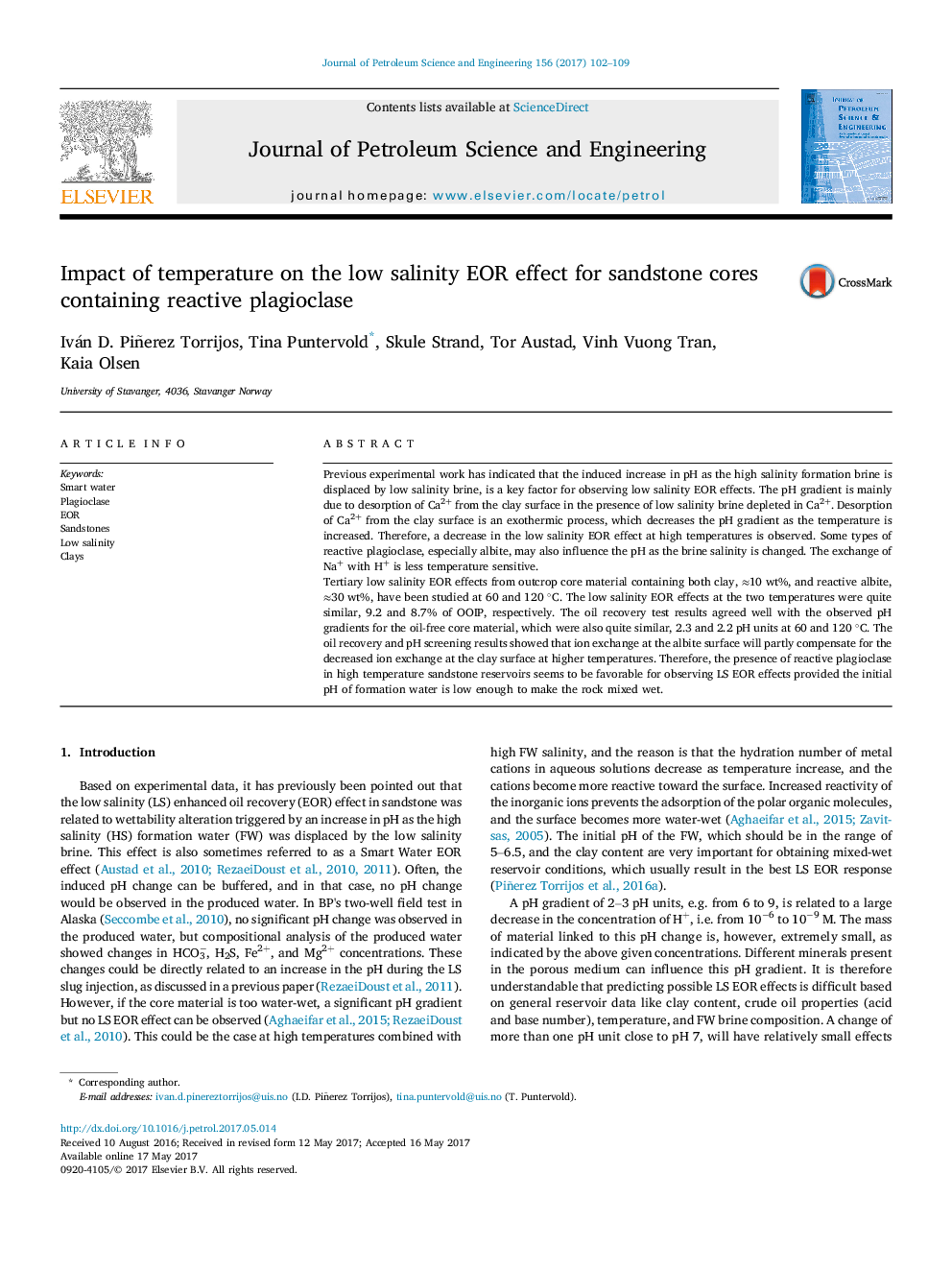| Article ID | Journal | Published Year | Pages | File Type |
|---|---|---|---|---|
| 5484091 | Journal of Petroleum Science and Engineering | 2017 | 8 Pages |
Abstract
Tertiary low salinity EOR effects from outcrop core material containing both clay, â10 wt%, and reactive albite, â30 wt%, have been studied at 60 and 120 °C. The low salinity EOR effects at the two temperatures were quite similar, 9.2 and 8.7% of OOIP, respectively. The oil recovery test results agreed well with the observed pH gradients for the oil-free core material, which were also quite similar, 2.3 and 2.2 pH units at 60 and 120 °C. The oil recovery and pH screening results showed that ion exchange at the albite surface will partly compensate for the decreased ion exchange at the clay surface at higher temperatures. Therefore, the presence of reactive plagioclase in high temperature sandstone reservoirs seems to be favorable for observing LS EOR effects provided the initial pH of formation water is low enough to make the rock mixed wet.
Related Topics
Physical Sciences and Engineering
Earth and Planetary Sciences
Economic Geology
Authors
Iván D. Piñerez Torrijos, Tina Puntervold, Skule Strand, Tor Austad, Vinh Vuong Tran, Kaia Olsen,
